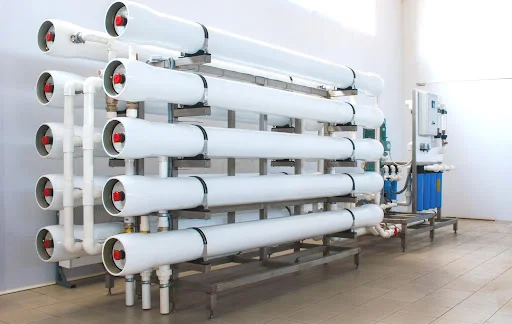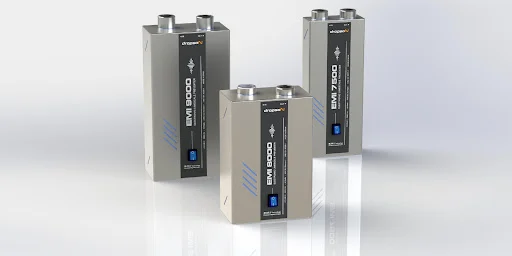THE IMPORTANCE OF PROTECTING REVERSE OSMOSIS MEMBRANES FROM LIMESCALE

To maintain the efficiency of your reverse osmosis (RO) system, it is important to keep the RO membranes free of limescale. Water is considered «hard» when it contains high s into contact with RO membranes, the calcium and magnesium ions can react with the membrane material and form hard, insoluble scale.
This scale can cause a decrease in water flow through the membrane, an increase in operating pressures and a reduction in the overall efficiency of the reverse osmosis system. To prevent scale build-up on reverse osmosis membranes, it is important to use a pretreatment device to treat these ions in the water before it reaches the reverse osmosis system.
How reverse osmosis works?
As mentioned above, reverse osmosis relies on hydrostatic pressure to force water molecules through a semi-permeable membrane. The hydrostatic pressure is generated by an external pump and is typically between 3.4 and 10.3 bar (50-150 psi). Applying pressure to the solution causes water molecules to move through the pores of the membrane, while ions and larger molecules remain on the concentrated side of the membrane.

Why can hardness damage osmosis membranes?
Hardness is a common phenomenon in groundwater and surface water. These minerals – which include calcium, magnesium and manganese – can severely damage your reverse osmosis membrane. When hardness minerals come in contact with the membrane, they can form deposits that foul the membrane and reduce its ability to function. In extreme cases, these deposits can clog the pores of the membrane, preventing water from passing through.
The advantages of using the Dropson anti-limescale system
The Dropson anti-limescale system physically treats the water with its EMI (Electronic Magnetic Impact) technology by crystallising calcium and carbonate ions in a non-scaling form. These CACO3 microcrystals, generated by the Dropson EMI system, remain on the concentrated side of the membrane and are discharged with the reject water.
The Dropson system protects the life of the osmosis membranes and is a more environmentally friendly option than traditional softeners, as it requires no chemicals or maintenance and does not alter the physico-chemical characteristics of the water.

Conclusion
In summary, it is important to take steps to protect reverse osmosis membranes from
limescale build-up to maintain the efficiency of the reverse osmosis system. By following the tips described above, you can help prolong the life of your membranes and ensure the proper
functioning of your system.
